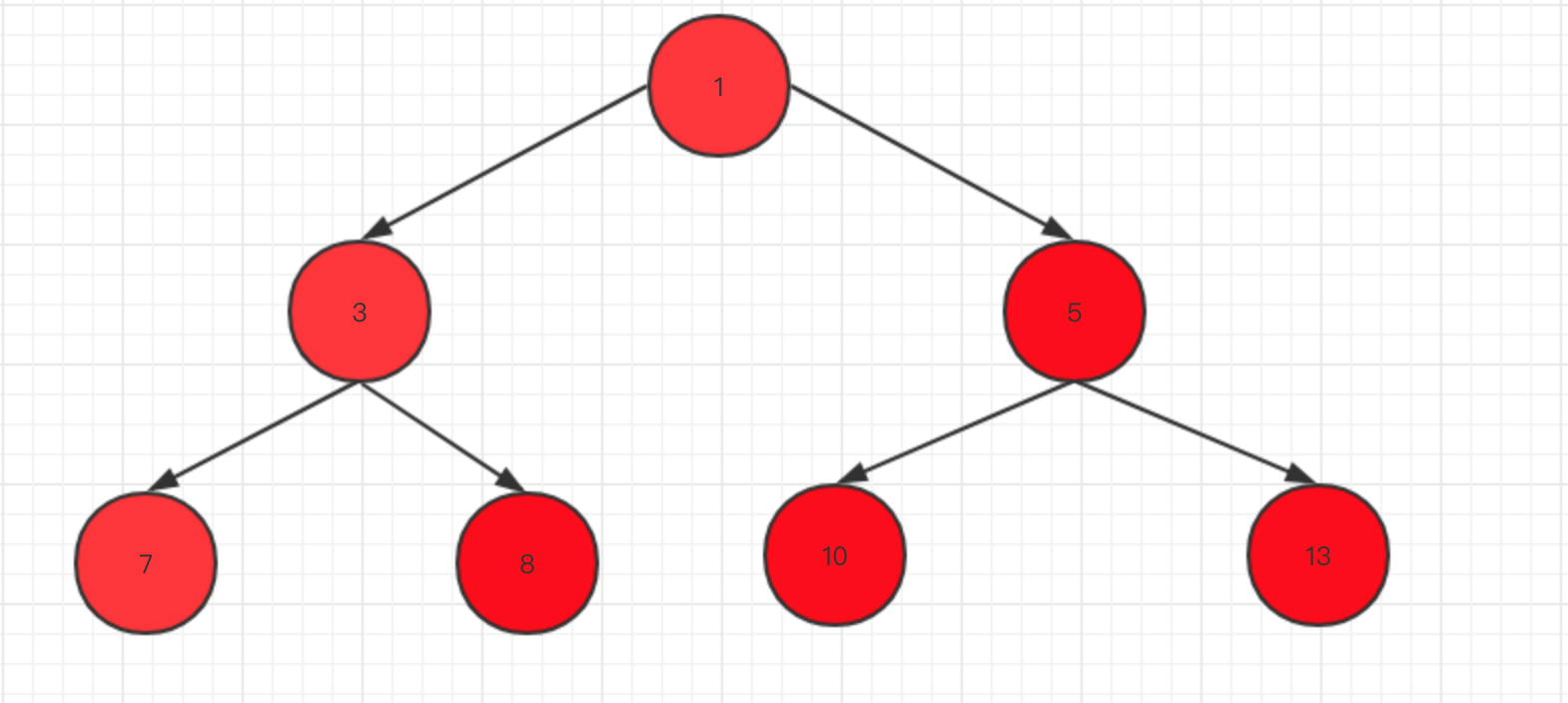ScheduledThreadPoolExecutor继承于ThreadPoolExecutor,并实现了ScheduledExecutorService接口,它的功能与Timer类似,但是拥有比Timer更高的灵活性和更多的功能,一般推荐使用它来替代Timer,以此实现延迟或者周期性运行的任务。下面看一下它的具体实现。
源码分析
我们先从它的构造函数看起,ScheduledThreadPoolExecutor有四个构造函数,可以指定不同的参数,比如核心线程数,线程工厂,拒绝策略等,其内部实现也是复用了ThreadPoolExecutor的对应构造函数,我们来看一下它的源码:
1 | public ScheduledThreadPoolExecutor(int corePoolSize) { |
因为篇幅原因,笔者只选择了一个构造函数展示,其余的构造函数可以分别指定线程工厂或者拒绝策略,但是其他的值是相同的。比如maximumPoolSize均是Integer.MAX_VALUE,说明池中的线程数目不受限制;keepAliveTime为0,说明非核心线程在空闲时立即死亡;最重要的一点是它的队列是自己实现了一个叫DelayedWorkQueue的东西,而不是通过参数传入,这里可以大胆猜测,这个或许就是延迟和周期性的关键。至于事实如何,这里先按下不表,我们之后再看下这个队列的具体实现。
前面我们知道了如何创建一个ScheduledThreadPoolExecutor,下面我们就需要知道如何使用它。使用过线程池我们都知道,在启动线程池时,我们一般调用submit方法,或者直接使用execute方法,那么ScheduledThreadPoolExecutor是不是这样使用的呢?答案是可以这样使用,但事实上我们一般不这么用。至于原因我们看下ScheduledThreadPoolExecutor的这两个方法的源码,如下:
1 | public void execute(Runnable command) { |
可以看到ScheduledThreadPoolExecutor重写了从ThreadPoolExecutor继承来得这两个方法,并且将它们的工作委托给了一个schedule方法,而ScheduledThreadPoolExecutor中的schedule方法时公有的,我们可以直接使用。事实上大多数程序员也确实更习惯于直接调用schedule方法,而且这两个方法调用的schedule方法只可以实现延迟任务,要想实现周期性的任务必须调用schedule的变种方法。下面看一下schedule的源码。
延迟任务
ScheduledThreadPoolExecutor中实现延迟任务的方法有两个,分别可以接受Runnable和Callable,大致逻辑相同,不同只是在于Runnable需要转换成Callable。我们看一下其中一个方法的源码:
1 | /** |
可以看着这个方法首先做了个判null,然后调用了一个decorateTask方法返回了一个对象,赋值给了RunnableScheduledFuture,我们看一下这个方法,它的源码如下:
1 | protected <V> RunnableScheduledFuture<V> decorateTask( |
通过方法名,我们知道这个方法应该起到一个装饰器的作用,但事实上这个方法其实什么都没有做,直接返回了task。这里我们需要知道,这是一个hook方法,可以通过子类重写来实现我们想要的操作。但默认情况下是直接返回。
既然返回了task,那么我们就看看这个task到底是什么,下面我们来了解一下这个ScheduledFutureTask。
ScheduledFutureTask
这是ScheduledFutureTask的一个内部类,继承于FutureTask,并实现了RunnableScheduledFuture接口,增加了对周期性任务的支持。主要方法一个run方法和一个cancel方法,具体实现也是委托给FutureTask的对应方法,对FutureTask感兴趣的读者可以看看笔者的另外一篇博客FutureTask
ScheduledFutureTask类的篇幅过长,这里就不在具体介绍了。我们只通过上面的源码看看该如何使用它。通过上面的代码我们能看到,在获取到ScheduledFutureTask后,将它传入了一个delayedExecute方法中。我们看一下这个方法的源码。
1 | /** |
我们看一下这个canRunInCurrentRunState方法,它的相关源码如下:
1 | boolean canRunInCurrentRunState(boolean periodic) { |
1 | final boolean isRunningOrShutdown(boolean shutdownOK) { |
可以看到若想返回true,则当前状态处于RUNNING,或者处于SHUTDOWN时,且continueExistingPeriodicTasksAfterShutdown或者executeExistingDelayedTasksAfterShutdown的值为true,这两个是ScheduledThreadPoolExecutor的成员变量。
到这里我们还是没有找到这个任务是如何被运行的,是在这个ensurePrestart方法里吗?看名称并不像,并且这个方法中也没有传入task,我们知道运行线程需要调用FutureTask或者它的实现类的run方法,这里就是ScheduledFutureTask的run方法。当然我们看到这个task被放在了一个队列中,而这个队列是成员变量,或许ensurePrestart又从这个队列中获取了task,但好像没有这个必要,毕竟可以直接传入。我们先来看一下这个ensurePrestart方法吧,它的源码如下:
1 | void ensurePrestart() { |
可以看到主要是一个addWorker方法,而这个方法继承于ThreadPoolExecutor,我们在ThreadPoolExecutor 这篇文章讨论过这个方法。但是与ThreadPoolExecutor不同的是,在ThreadPoolExecutor中是有可能直接向addWorker传入一个FutureTask直接执行它。而在ScheduledFutureTask中不行,我们必须从队列中获取它。下面来看一下ScheduledThreadPoolExecutor中的这个队列。
DelayedWorkQueue
DelayedWorkQueue是一个优先级队列,有点类似于DelayQueue和PriorityQueue的实现。底层存储结构采用的是一个二叉堆数组,保证了最先被执行的任务一直在队列的顶端。在介绍这个队列之前,我们需要先了解一下二叉堆。在维基百科中对二叉堆的定义为:父节点小于任意一个子节点,且每个节点的左子树和右子树也是一个二叉堆。并且二叉堆可以分为大顶堆和小顶堆,显而易见DelayedWorkQueue中的堆是个小顶堆。下面通过几张图看看小顶堆到底是什么样的,以及它的数组表示形式。

它的数组结构可表示如下:
1 | [1,3,5,7,8,10,13] |
仔细观察,我们会发现二叉堆数组的一个特性,它非常便于寻找一个节点的子节点和父节点。比如,假设某一个节点的下标为k,那么它的子节点和父节点满足下面这些特性。
- 子节点的下标k:k = 2 i + 1 或者 k = 2 i + 2 。(一个是左节点,一个是右节点,二叉堆对左右子节点的大小没有规定)
- 父节点的下标j:j = (i - 1)/ 2。
介绍完二叉堆,下面我们来看看DelayedWorkQueue的源码,先看一下它的成员变量,源码如下:
1 | private static final int INITIAL_CAPACITY = 16; |
可以看到它的初始容量是16,根据经验,这个有初始容量的应该可以自动扩容,因此这个队列是一个无界队列。这个数组queue应该就是那个二叉堆数组,用来存储task。lock用来同步;size是大小,即任务数量;available用于阻塞线程。那么leader是什么呢?根据注释我们知道它就是具体从堆中取出任务的线程,前面说的worker线程在进入队列后,应该便会赋值给它。注释还说了它采用了一个Leader-Follower模式的变种,那这个模式到底是什么呢?
在这个模式中把线程分为三种状态:领导者Leader,追随者Follower,和处理者proccesser。其中Leader是唯一的,它会等待网络IO事件,而Follower很多,它们都在等待成为新的Leader。当一个事件进来时,Leader会首先从Follower中选举出一个新的Leader,然后就去处理这个事件,当处理完成后,它会进入Follower队列中等待再次成为Leader。这就形成了一个闭环来循环处理这些事件。
上面这段定义是笔者从网上搜索得到,读者如果希望更深入的了解它,可以查询相关资料。
下面看一下这个队列的入队和出队操作。
ScheduledThreadPoolExecutor中入队调用的是DelayedWorkQueue的add方法,我们看一下这个方法的源码:
1 | public boolean add(Runnable e) { |
可以看到它把事情委托给了一个offer方法,offer方法的源码如下:
1 | public boolean offer(Runnable x) { |
下面看一下它的扩容和建堆算法。扩容方法如下:
1 | /** |
可以看到扩容到1.5倍。下面看一下siftUp的源码,如下:
1 | /** |
到这里offer方法介绍完了,下面看一下出队的take方法,它的源码如下:
1 | public RunnableScheduledFuture<?> take() throws InterruptedException { |
DelayedWorkQueue到这里就介绍完了,下面继续上面的任务调度执行,我们来看一下周期性任务和延时任务是有什么区别。我们都知道最终执行任务调用的是ScheduledFutureTask的run方法,我们来看一下它的源码,如下:
1 | /** |
可以看到在这方法里,它区分的延时任务和周期性任务。如果是延时任务,调用run方法;如果是周期性的,则调用runAndReset方法,并且还执行了两个后置方法。我们看一下这两个方法。
1 | /** |
通过period设置下次执行时间,对这个变量的介绍如下:
1 | /** |
可以看到它有三种取值。
- 0:非周期性任务
- 正数:表明是fixed-rate模式的周期任务,该模式下间隔时间从任务刚开始执行开始计算。
- 负数:表明是fixed-delay模式的周期任务,该模式下间隔时间从任务执行结束后计算。
ScheduledThreadPoolExecutor便是通过这个值来区分任务类型的。
总结
ScheduledThreadPoolExecutor就介绍到这里了。本文算是笔者边读源码边做的笔记逻辑有些混乱,读者若有不明白之处或者发现错误疏漏之处,可以在评论中留言,或者查询其他资料来解惑。一家之言不可全信,笔者当自行验证之。ßß